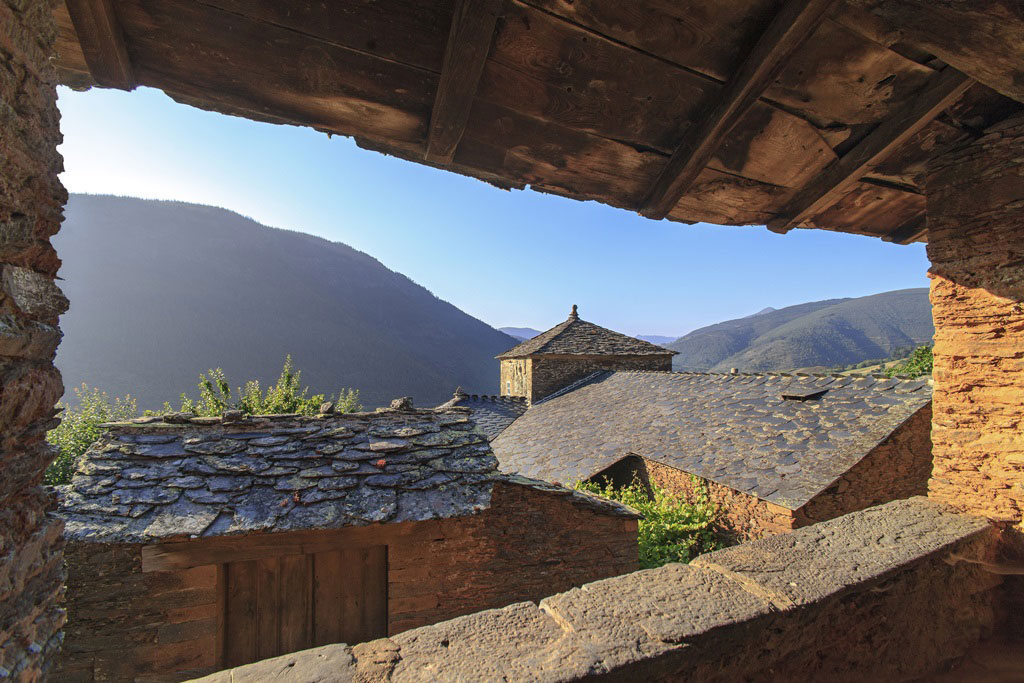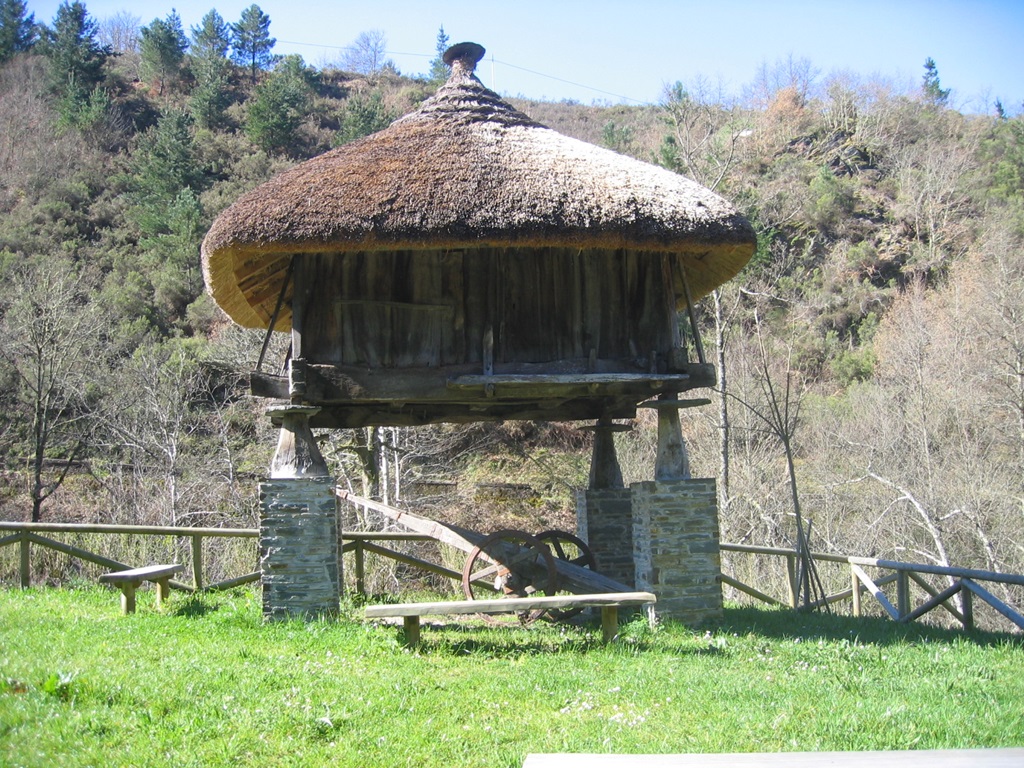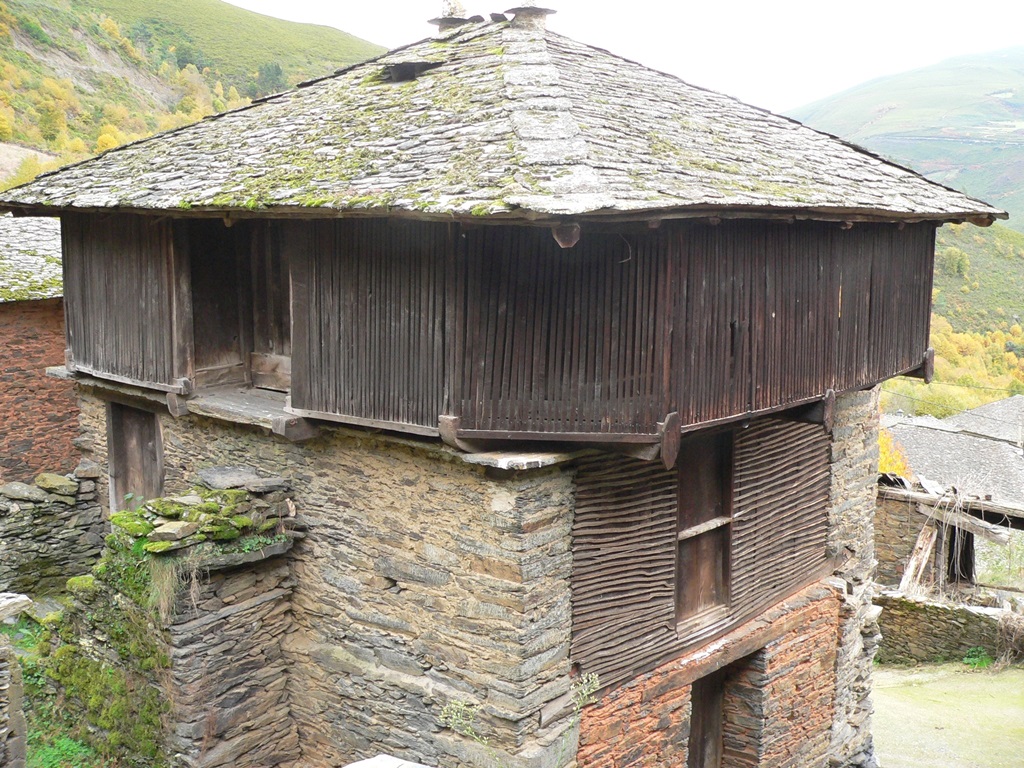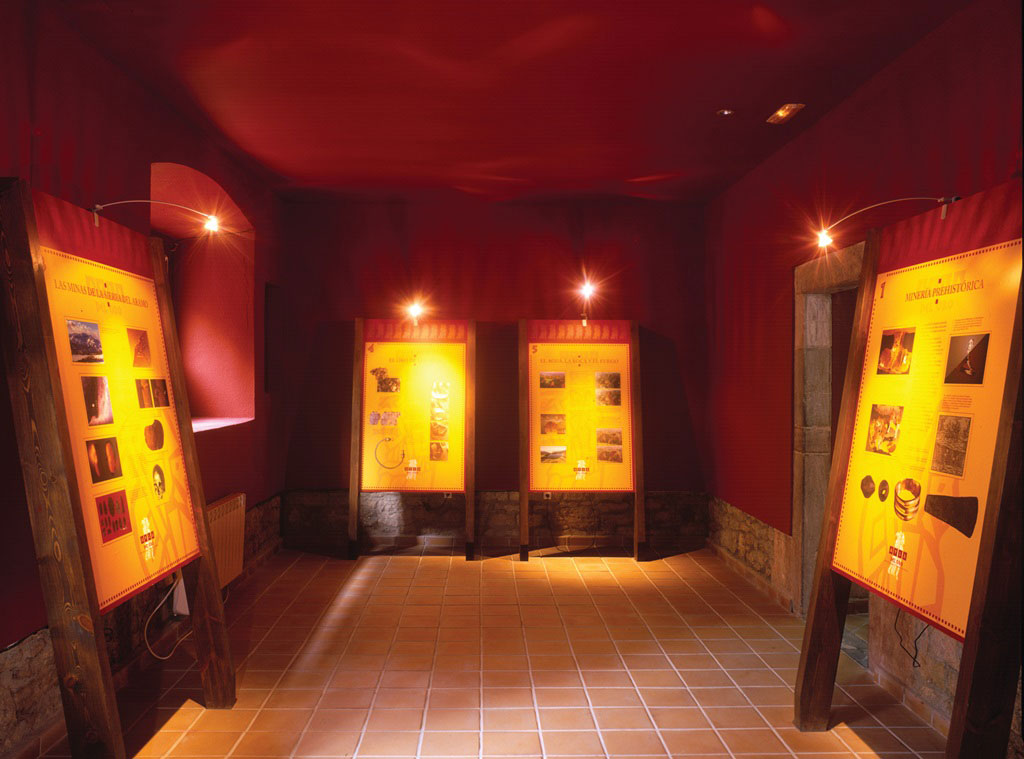The Council of Pola de Allande is a part of the Region of Vaqueiros which passes from coastal to inland towns of and is linked by the tradition of the seasonal migration of the livestock trade. The “vaqueiros” or cattle drivers began to inhabit this part of Asturias in the medieval times and the most distinctive aspect of this that still exists today are the Brañas or highland pastures where they used to breed their cattle.
In this area you will find many examples of this way of life in La Braña of El Campel or Bustantigo on the way to the Palo Pass. Also, you can see the legacy of the two deserted vaqueiro towns of Pontenova and El Caleyu. It is also recommened that you visit the San Chuis Celtic settlement with its spectacular views as it is of great importance due to its situation and age.
Other points of cultural interest are the town of San Emiliano with country and medieval architecture which have been declared of Artistic and Historic importance. San Emiliano has a very beautiful church, a Tower and some fine ethnographic examples of Asturian food stores and local architecture. Also, in the Romanic Church of Celon, from the 12th century is home to one of the best medieval paintings of Asturias and also bronze bells which date back to 1222AD.
The area of Pola de Allande is nestled into the mountains of Los Lagos, Carondio and Valledor. Its main village is called Pola de Allande which located in the shade of the Cienfuegos Castle from the 15th Century and has the appearance of a medieval fortress.
Pola de Allande has a very colonial feel to it with a lot of “Indiano” constructions from their emigrant past especially from Santo Domingo and Puerto Rico. Asturias underwent large scale emigration at the end of the 19th century and the beginning of the 20th century to the Americas, especially Cuba, Mexico, Argentina, Venezuela and the US. After the emigrants settled into their new homes and became wealthy they didn’t forget their roots and decided to build these magnificent houses to show off their new status as rich men. This style of very distinctive and characteristic architecture was almost always is accompanied by large ornate gardens of palm trees as a part of their identity. Also, a lot of the “Nouveau Riche” acted as sponsors and helped finance some basic needs in the towns like education, water or drainage.
Pola de Allande is also a part of the “Primitive Route« of the «Route of Santiago” which starts in Oviedo and passes through many towns of the area taking in amazing landscapes and making this a very peaceful and beautiful part of the walk. Here you can find three pilgrim refuges, Albergue Municipal de Peregrinos de Pola de Allande, Albergue de Peñaseita and Albergue El Camín Antiguo.
Since the Roman Times Pola de Allande has long been connected the gold mining industry. Here you will find examples of Roman exploitation of gold at Fana La Freita and Cueva Xuan Rata.
The Gastronomy in Pola de Allande is based on a traditional Asturian fare, with stews, Asturian reared beef, Chicken dishes, cured meats, sweet treats and Asturian cheeses.
More info: Allande Tourist Office
If you want more information contact Where is Asturias at info@whereisasturias.com
Images supplied by Tomás Fano

































